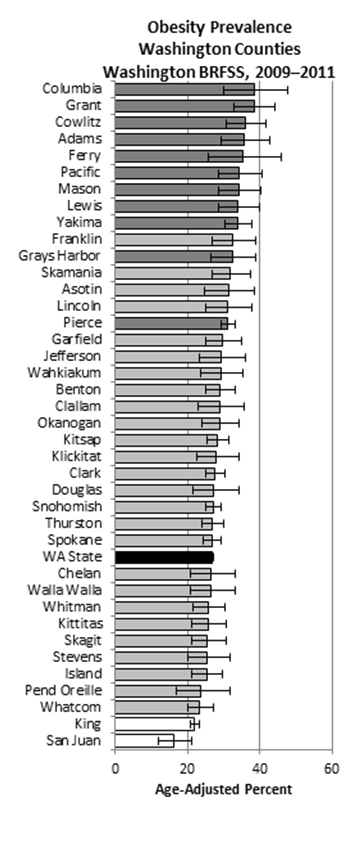Hey, fitness and health-care fans: The USA has fallen out of first place in the latest Earthwide obesity standings. (Yes, the anti-bragging rights for this non-honor were saddled on Uncle Sam’s ample hind quarters for a good many years.) The 99-page 2013 U.N.chronicle looks at the world’s developed nations and tallies the percentage of their people 20 years old and up whose body mass index (BMI) is 30 and up.
 Mexico just barely captures the top spot, edging us out of it by a percentage point (32.8 for our friends south of the border and 31.8 for us). Rounding out the top BMI five are Syria (31.6), and Libya and Venezuela (both 30.8). Japan is the world’s “thinnest” nation, coming in at 4.5 on the BMI scale.
Mexico just barely captures the top spot, edging us out of it by a percentage point (32.8 for our friends south of the border and 31.8 for us). Rounding out the top BMI five are Syria (31.6), and Libya and Venezuela (both 30.8). Japan is the world’s “thinnest” nation, coming in at 4.5 on the BMI scale.
“What’s it all mean?” you might very well ask. Or perhaps: “How do these weighty figures hit our bottom line?” Well, keep in mind that people have a much greater likelihood of suffering non-infectious, life-threatening diseases such as diabetes and heart problems if they’re overweight. The global cost of these diseases was placed at about 1.4 trillion U.S. dollars in 2010.
Juliet VanEenwyk, Ph.D., who works at the Washington State Department of Health(DOH), is the State Epidemiologist for Non-Infectious Conditions. VanEenwyk said that “we focus on overweight children and obesity in children, because overweight children and obese children are most at-risk for adult obesity. For adults, we focus primarily on obesity, because the risk of premature illness, such as heart disease and diabetes, is greater for obese adults than for overweight adults.
that “we focus on overweight children and obesity in children, because overweight children and obese children are most at-risk for adult obesity. For adults, we focus primarily on obesity, because the risk of premature illness, such as heart disease and diabetes, is greater for obese adults than for overweight adults.
“We also like to focus on the importance of physical activity and a healthy diet, independent of weight,” she added. “It’s really hard for folks to lose weight, but a healthy diet and physical activity have health benefits even for people who are overweight or obese.”
VanEenwyk shared some recently compiled data. In 2012, for instance, about a quarter of the kids ages two through four served in the Special Supplemental Nutrition Program for Women, Infants, and Children program were either overweight or obese. Eleven percent of the youngsters were obese and an additional 14 percent were overweight.
Alarmingly, adult obesity is becoming more common in Washington. Based on self-reported heights and weights, the Behavioral Risk Factor Surveillance System (BRFSS) found that the age-adjusted percent of Washington adults who were obese increased from 10 percent in 1990 to 26 percent in 2010. VanEenwyk said that a 2011 report found 27 percent of Washington adults exhibited heights and weights indicating obesity. The accompanying chart lists percentages for Washington’s 39 counties. The thin bars at the end show the margin of error in the point estimate.
Here’s a very germane DOH weblink. Here’s another one.
And, speaking of health care, click me for the most up-to-the-minute news on health-care proposals in the Washington State Legislature.
